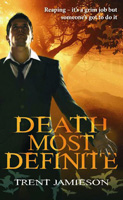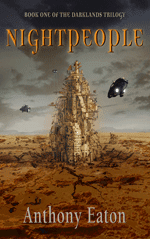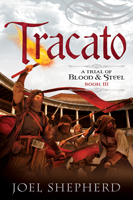This trilogy paints an evocative picture of post-apocalyptic Australia, a thousand years from now. Two populations are clinging to survival. The first group—the Darklanders—live by hunting and foraging in contaminated land enclosed by a huge black wall, and are guided by gifted Dreamers who can communicate by ‘reaching’ magically to the Earth Mother. The second group of survivors, the Skypeople or Nightpeople, live in an artificial, cocooned technological environment; upper classes live in luxury while an underclass serves them and lives in squalor.
It has become clear that neither society is ultimately viable, and it will take co-operation between the groups for humanity to survive. The Darklands people have mutated and adapted, but live very primitively, and have only a tiny population with a limited gene pool, whereas the Skypeople have extremely sophisticated technology and medical knowledge, but have not evolved at all. Their artificial society has become unstable both because of entropy to the aging fabric of the physical environment, and social entropy tearing their unstable society apart. They seek to understand the genetic makeup of the Darklands people, to enhance the genetic pool available and perhaps isolate the genes that make people ‘viable’ out of doors in the fierce, contaminated climate.
The first volume introduces us to Saria, who may be the last viable baby born to the Darklanders. The second centres on Lari, a disaffected son of the upper class in the tech city. Thus the author gives us an intimate picture of the deserts and forests of the primitive tribe, and by contrast, the doomed technology-dependent city society.
Saria and Lari team up, and with others from both environments form the Clan who are the focal group in Volume Three, Daywards. Children from the next generation—Dara and her twin brother Jaran, with their cousin Eyna—are now the chief protagonists. There is an ongoing social and political struggle in the Clan—is it betrayal to co-operate with the remnants of the tech civilisation, or is it expediency for the survival of them all? I found this third volume the least convincing, as Clan members variously tricked each other, betrayed their group, sulked, and resorted to Earth Magic inconsistently, while the aged Saria of Volume One wisely oversaw their doings. To say any more would be to spoil the story for readers. In spite of my misgivings about the ultimate resolution of it all, I found this trilogy to be an engrossing and wonderfully imagined exploration of a highly credible Australian future.
Review by Crisetta MacLeod



